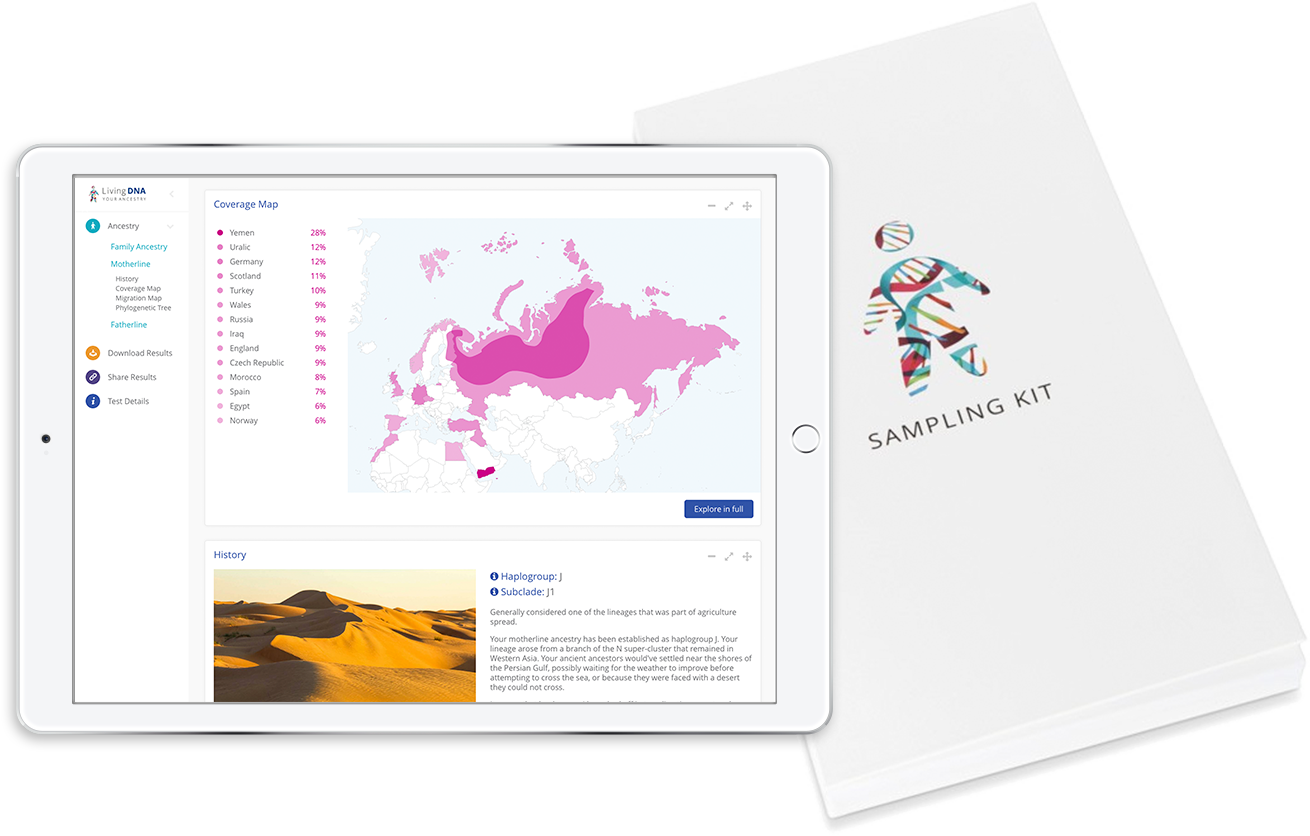DNA testing for close relationships, such as grandparent, brother or sister, produces different results from a DNA paternity test.
As with a DNA paternity test, an analysis for a close relationship looks for matches between DNA profiles but with this important difference: not all locations will necessarily show a match.
THE DNA RESULTS STATEMENT
Results are reported with one of three possible statements. For example, if we tested John Doe, alleged uncle, and James Doe (child-nephew), our relationship report might say one of the following:
The DNA data support the biological relationship.
This means that John Doe is likely to be the uncle of James Doe, or that a brother of John Doe is likely to be the father of James Doe. The results conclusively support the biological relationship, in the absence of a direct paternity test.The DNA data are inconclusive and neither support or refute a biological relationship.
This means that DNA profiles do not give enough information about the biological relationship to draw a conclusion.The DNA data do not support the biological relationship.
This means that John Doe is most likely not the uncle of James Doe, or that a brother of John Doe is most likely not the father of James Doe.
Close relationship DNA testing is more likely to produce an inconclusive result than a direct DNA paternity test. To understand why, consider how DNA markers are inherited. Each child receives one half of his DNA markers from his biological father and one half from his mother. His sister also receives one half of her genes each from father and mother but it is very unlikely that the siblings will receive the same half from the biological father or mother at all markers tested. (Only identical twins share the same DNA profiles.)
If siblings, or other closely related participants, do not match at all locations, how can we tell whether two (or more) people are closely related or just randomly match and are really unrelated?
CLOSE RELATIONSHIP DNA PROFILES
A DNA test for siblings (or other close relationships) expects to see some matches and specifically looks for matches that are relatively rare. Just like with paternity results, each match is assigned and index value that indicates the strength of the match.For example, two participants might each show an allele value of "12" at marker D2S1338, the relationship index (RI) value might be 1.845. This is a reasonably strong match.
| Locus | Sibling 1 | Sibling 2 | Relationship Index |
| D2S1338 | 12, 13 | 10, 12 | 1.845 |
However, if DNA test analysts knew that most people would have an allele value of "12" at this location, the index might be smaller, say .0782. It's true the two participants match, and that could be because they are closely related, but it could also be they match simply because most people would match with this allele value at this location.
| Locus | Sibling 1 | Sibling 2 | Relationship Index |
| D2S1338 | 12, 13 | 10, 12 | .0782 |
On the other hand, what if DNA scientists knew that very few people would have an allele value of "12" at this location? The match would be stronger because it's more rare. In this case the RI value might increase; it might be 3.452, or 12.819 or as high as 34.125, depending on the strength of the match. An index value is 0.000 indicates that there is no match between the two profiles at this location.
RELATIONSHIP INDEXES
As with paternity tests, all of the indexes are multiplied together to generate a Combined Relationship Index (CRI). The graph below illustrates the range of possibilities.
| CRI: | Less than 1 | 1 to 100 | 100 or greater |
A paternity test usually comes one of two conclusions: excluded (CPI of 0) or not excluded (CPI of 100 or greater). DNA paternity tests rarely produce an inconclusive result (CPI between 1 and 100), especially when the biological mother is tested.
| Excluded | Inconclusive (Very Rare) | Not Excluded | |
| CPI: | 0 | 1 to 100 | 100 or greater |
DNA testing for close relationships show different conclusions: not supported, inconclusive, and supported. However a conclusive range for a particular DNA relationship test varies depending on the specific individuals tested. For example, a CRI of 74 may offer strong support for a particular relationship study (whereas in paternity testing, the CPI must be 100 or greater to support the relationship). Whether a particular CRI supports a relationship such as sibling or grandparentage depends on the profile data, the population reference (white, black, hispanic, etc.) and the relationship in question.
| Not Supported | Inconclusive | Supported | |
| CRI: | Very Low | Low to Medium | High |
If two (or more) individuals are closely related, DNA analysts expect to see a relatively high CRI. A high CRI is considered strong evidence of a biological relationship. Of course, just as with paternity testing, including the biological mother of any child (sibling, niece, nephew, grandchild) in question always strengthens the DNA test results.
CONCLUSION
It is possible (though very unlikely) that two individuals produce a higher CRI and are still be unrelated. It is also possible (though very unlikely) that two individuals produce a low CRI and are actually related. For this reason, results from a DNA paternity test always outweigh results from any other DNA test for close relationships.
DNA Worldwide understands that, in some situations, a direct DNA paternity test may not be possible. Results from a close relationship DNA analysis can be used for legal purposes, such as immigration testing, and often provide peace of mind. Contact DNA Worldwide on 01373 751 131 for DNA testing help.



.jpg)

.jpg)


